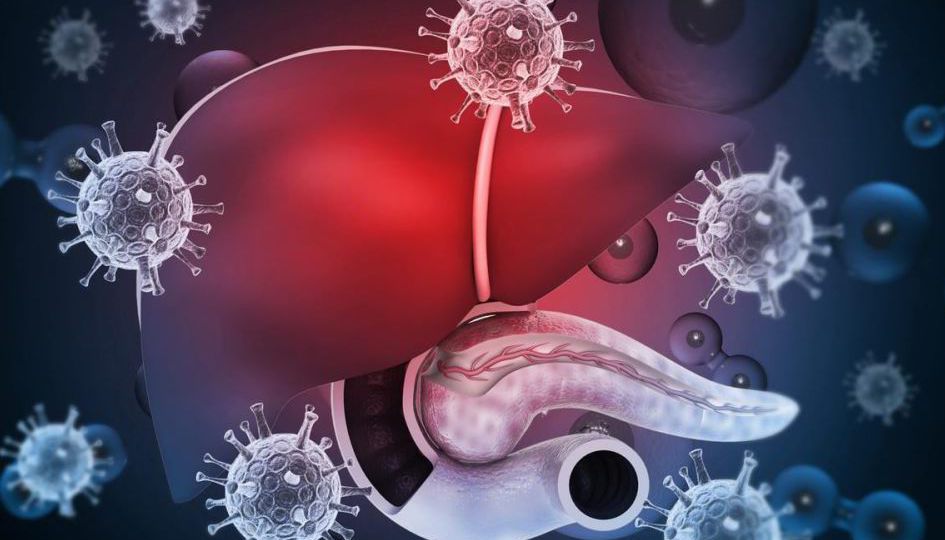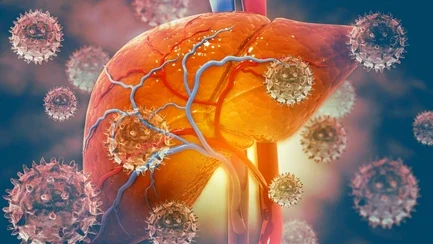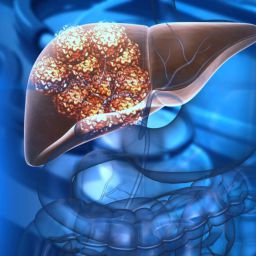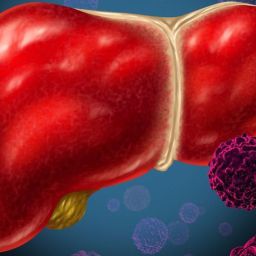
1. Mechanisms of Cancer Spread
Cancer cells can spread through the bloodstream, lymphatic system, or by directly invading surrounding tissues. The liver, due to its unique position in the circulatory system, is often one of the first organs to be affected when cancer cells enter the body’s blood vessels.
1.1 Bloodstream Spread
The liver receives blood from two main sources: the hepatic artery and the portal vein. This rich blood supply makes the liver a prime target for metastases. Once cancer cells infiltrate the liver, they can continue to spread through the bloodstream to distant organs. This systemic spread can lead to the formation of secondary tumors in the lungs, bones, peritoneum, or other parts of the body.
1.2 Lymphatic System
The liver is also connected to the body’s lymphatic system, which is responsible for transporting lymph fluid and fighting infection. If cancer cells invade the lymphatic system, they can be carried to nearby lymph nodes and further disseminate to other parts of the body.
2. Organs Affected by Liver Metastases
Liver metastasis can be associated with the spread of cancer to various organs, depending on the primary cancer type and the stage of the disease. The most common sites for further metastasis include:

- Lungs: The lungs are one of the most common organs affected by metastasis from liver cancer. As the liver’s blood supply is directly connected to the lungs, cancer cells can easily travel to this organ.
- Bones: Metastatic liver cancer can spread to bones, particularly in the spine, ribs, and pelvis. Bone metastasis is often painful and may lead to fractures.
- Peritoneum: The peritoneum, the lining of the abdominal cavity, can be affected by metastases from the liver, leading to peritoneal carcinomatosis. This condition is associated with abdominal pain and swelling.
- Lymph Nodes: Metastasis to nearby or distant lymph nodes can further facilitate the spread of cancer to other organs in the body.
3. Factors Influencing the Spread of Liver Metastases
The likelihood of liver metastases spreading to other organs depends on several factors, including the type of primary cancer, the presence of other underlying conditions, and the stage of cancer. Cancers that are more aggressive or have a higher tendency to spread are more likely to cause secondary tumors in organs beyond the liver.
3.1 Aggressiveness of Primary Cancer
Certain cancers are more likely to spread to the liver and beyond. For example, colorectal cancer frequently spreads to the liver, and then to other organs such as the lungs. Similarly, breast cancer and lung cancer have a high tendency to metastasize to the liver and other parts of the body, including bones and the brain.
3.2 Liver Function and Angiogenesis
The liver plays a key role in filtering blood and processing nutrients. When cancer cells invade the liver, they disrupt its normal function. Additionally, as tumors grow in the liver, they can trigger angiogenesis – the process by which new blood vessels form to supply the tumor with oxygen and nutrients. This increases the tumor’s ability to spread beyond the liver to other parts of the body.
3.3 Immune System Evasion
Cancer cells are often able to evade detection by the immune system, allowing them to proliferate and spread throughout the body. Once liver metastasis occurs, the immune system may be unable to effectively fight the cancer cells, increasing the risk of further spread.
4. Clinical Presentation of Spread Beyond the Liver
The symptoms of liver metastasis depend on the extent and location of the spread. When metastases extend to other organs, new symptoms may arise, signaling the need for further investigation and treatment.

4.1 Symptoms of Liver Metastasis
In the early stages, liver metastasis may not cause obvious symptoms. However, as the cancer progresses, patients may experience:
- Upper abdominal pain or discomfort: As the liver enlarges, it can cause pain and a sense of fullness in the upper abdomen.
- Jaundice: The liver’s ability to process bile may be compromised, leading to yellowing of the skin and eyes.
- Weight loss and loss of appetite: Unexplained weight loss can be a sign of advanced liver metastasis.
- Nausea and vomiting: Disruption of liver function can result in digestive issues, including nausea and vomiting.
4.2 Symptoms of Further Spread
As liver metastases spread to other organs, new symptoms may include:
- Shortness of breath: If the cancer spreads to the lungs, patients may experience difficulty breathing, persistent coughing, or chest pain.
- Bone pain: If the cancer spreads to bones, it can lead to pain, fractures, and reduced mobility.
- Neurological symptoms: When the cancer spreads to the brain, it can cause headaches, dizziness, confusion, and other neurological issues.
- Swelling in the abdomen: Fluid accumulation in the peritoneum due to cancer spread can cause swelling and discomfort in the abdomen.
5. Diagnosis of Liver Metastasis and Spread to Other Organs
Diagnosing liver metastasis and identifying the potential spread to other organs requires a comprehensive approach. Several diagnostic tools are used to assess the extent of cancer spread:
5.1 Imaging Techniques
- CT scans provide detailed images of the liver and surrounding organs, helping identify the presence of liver metastasis and its spread to other parts of the body.
- MRI is often used for its high-resolution images, allowing doctors to see soft tissues and liver tumors more clearly.
- PET scans can help detect metabolic activity in tissues and identify cancerous cells that may have spread to other organs.
5.2 Biopsy
A biopsy involves removing a small sample of tissue from the liver or another organ to examine under a microscope. This is often done to confirm that cancer is present and determine the origin of the primary tumor.
6. Treatment Options for Liver Metastasis and Its Spread
Treating liver metastasis and its spread to other organs requires a multi-faceted approach. Treatment plans depend on the type of primary cancer, the extent of metastasis, and the overall health of the patient.
6.1 Chemotherapy
Chemotherapy is commonly used to treat liver metastasis. This systemic treatment targets cancer cells throughout the body and can help shrink tumors in both the liver and other organs.
6.2 Targeted Therapy
Targeted therapy involves the use of drugs that specifically target cancer cells, interfering with their ability to grow and divide. This is especially useful in treating cancers like colorectal cancer and breast cancer that often metastasize to the liver and other organs.
6.3 Surgery
Surgical resection may be an option if the liver metastases and other secondary tumors are localized and accessible. Surgery can remove the tumors, offering a potential cure or significant extension of life.
6.4 Radiation Therapy
Radiation therapy can be used to target tumors in the liver or other organs. It is often used to alleviate symptoms or shrink tumors to make other treatments more effective.
7. Prognosis and Managing Liver Metastasis
The prognosis for liver metastasis depends largely on the type of cancer, the extent of metastasis, and the patient’s response to treatment. In many cases, the spread of cancer to the liver is a sign of advanced-stage disease, and the prognosis may be poor. However, with early detection and aggressive treatment, patients may experience improved quality of life and extended survival.
Regular monitoring and imaging are essential for detecting any new areas of spread and adjusting treatment accordingly. Managing symptoms such as pain and fatigue, and providing psychological support, are also important components of care.
Liver metastases have the potential to spread to other organs, complicating treatment and prognosis. The ability of cancer to infiltrate the liver and spread through the bloodstream or lymphatic system poses significant challenges for both patients and healthcare providers. Understanding the dynamics of liver metastasis and the possibility of further spread is essential for determining the appropriate course of treatment. Early detection, a tailored treatment plan, and close monitoring are key to managing the disease and improving the outlook for patients with liver metastasis.


